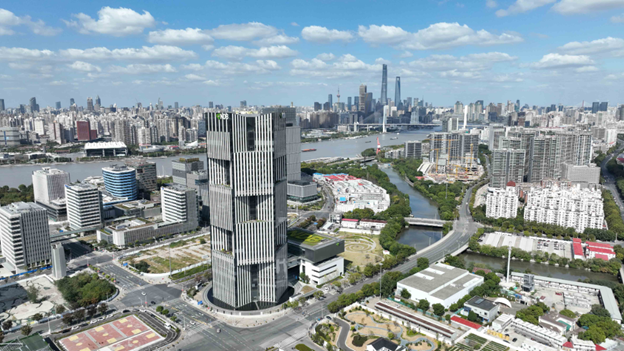What is the New Development Bank (NDB) of BRICS?
Brazil, Russia, India, China, and South Africa (BRICS) formed the New Development Bank (NDB), a multilateral development organization, to finance sustainable development and infrastructure in rising countries. BRICS.
After signing its foundation treaty in 2014, it formally started operations in the middle of 2015.
(NDB), a multilateral development bank, to mobilize funds for sustainable development and infrastructure projects in emerging markets and developing nations (EMDCs).
Where is the headquarters of the BRICS New Development Bank?
The New Development Bank (NDB), a multilateral development bank, was established by the BRICS (Brazil, Russia, India, China, and South Africa) to raise money for infrastructure and sustainable development projects in emerging and developing countries (EMDCs).What is the new name for BRICS?
BRICS+ is the colloquial term for the enlarged BRICS group. The recent inclusion of additional members, such as Egypt, Ethiopia, Iran, and the United Arab Emirates, is reflected in this name. Although China suggested the name BRICS+, it hasn't been formally adopted yet. For the core group, the original BRICS acronym—which was created by combining the initial letters of Brazil, Russia, India, China, and South Africa—has been kept.
Who is the CEO of BRICS Bank?
Dilma Rousseff is now the president of the New Development Bank (NDB), also known as the BRICS bank. She will hold the post until July 6, 2030, after being re-elected in March 2025. In the past, Dilma Rousseff was the president of Brazil.Ownership & Capital
The total amount of authorized capital is $100 billion, of which the first $50 billion is divided equally among the five BRICS countries ($10 billion each).
Since there is no veto power and each founding nation has equal voting power, decisions are made by consensus.
Leadership & Governance
The bank has regional offices in South Africa, Brazil, India, and Russia in addition to its headquarters in Shanghai.
It is run by a rotational presidency, which Dilma Rousseff is holding till July 2025.
The BRICS group's vice presidents assist the Board of Directors and the Board of Governors, which consists of the finance ministers.
Mission and Activities
Goal: The NDB raises funds for environmentally friendly infrastructure initiatives in emerging economies, including the BRICS countries.
Nearly 100 projects worth approximately $32 billion have been approved as of early 2025.
Clean energy, transportation, urbanization, water sanitation,
digital infrastructure, and social sectors (education, health) are among the projects.
It raised almost $3.5 billion by setting up emergency facilities and pandemic bonds during COVID-19.
The Significance of Using It Instead of Western Institutions Because it emphasizes respect for national sovereignty and imposes fewer political constraints, it provides a legitimate alternative to organizations such as the World Bank and IMF.
Encouragement of Local Currencies
In order to lessen reliance on the US dollar, the NDB aims to finance projects in local currencies, such as renminbi, rupee, real, and rand.
Equitable Governance
Meeting Demand Worldwide
In order to provide a financial safety net for balance of payments crises, it enters the Contingent Reserve Arrangement (CRA).
Growth and Increasing Impact
In addition to the BRICS, the NDB has accepted new members from Bangladesh, the United Arab Emirates, Egypt, Algeria, and Uruguay, and more are in the process of joining.
Notably, Colombia joined in June 2025, signaling a deliberate departure from conventional Western banks and a move toward diverse finance.
Impact & Challenges
By investing more than $7 billion in 21 projects, the bank has successfully accelerated India's infrastructure and renewable energy industries.
Its shortcomings include delayed project execution, a narrower scope in comparison to industry titans like the World Bank, and a continued reliance on USD in spite of local currency rhetoric.
Concluding remarks
As a more equitable and adaptable substitute for development organizations run by the West, the New Development Bank is a shining example of South-South collaboration. It is changing the way emerging countries obtain money through local currency efforts, equal governance, and an expanding global presence. Its quick growth and diversity show a significant shift in global economic power—a future where voices from the Global South have more influence over development finance, even though it is still smaller in scale and has growing pains.
Who is the 9th member of NDB?
Algeria is the eighth member of the New Development Bank (NDB). In May 2025, it submitted its document of accession, formally joining the bank. The NDB, sometimes referred to as the BRICS bank, was founded with the goal of raising funds for sustainable development and infrastructure initiatives in emerging markets and underdeveloped nations.











